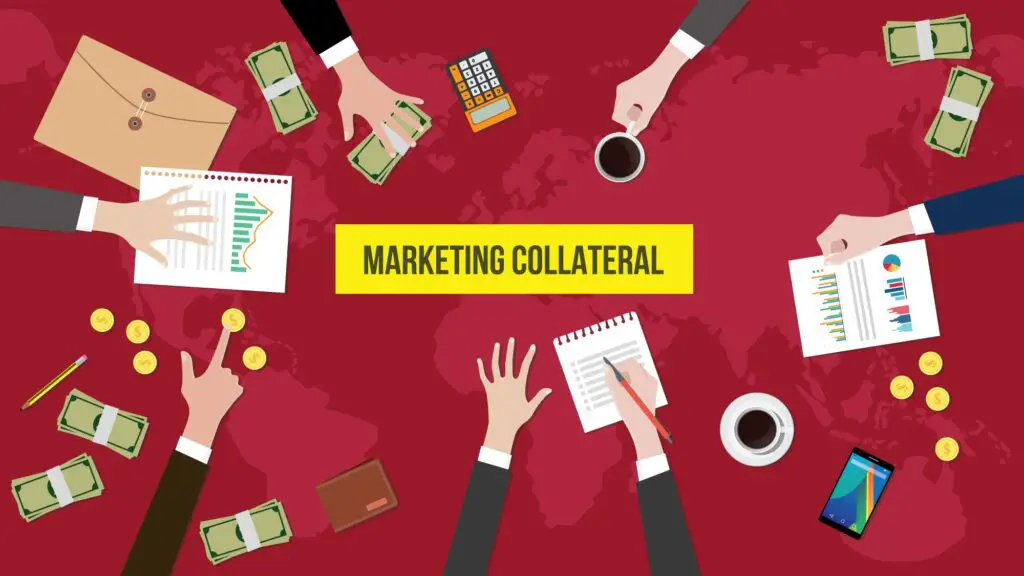Marketing collateral is a collection of media materials used to promote a company’s products or services. These media materials not only help you generate leads and sales, but they can also help you build a brand and create more brand awareness.
As stated before, marketing collateral is a collection of media, meaning it consists of more than one material. You need a system in place to manage these materials, making it easy to access, update, and share them with others. There are various marketing collateral management tools you can use for this, but you’ll need the know-how to do it. This article discusses that. Keep reading to learn more.

Essential Steps For Effective Marketing Collateral Management
Marketing collateral management can be broken down into four categories: planning, creation, distribution, and tracking.
1. Planning
Planning helps you have a clear strategy to streamline the production workflow. It involves identifying a target audience, determining the message you want to convey, selecting the marketing material type, and assigning tasks. Here are the essential building blocks of your plan:
- A Consolidated Workspace
This makes management more efficient. Use a single platform, such as a professional system, that allows you to have all your team members in one place. Here, you can easily share work-related information, give instructions, and store your files. A consolidated workspace reduces the chances of anyone missing out on their responsibilities. For instance, missing a meeting or being unaware of any changes in such a setup can be nearly impossible. Ultimately, a consolidated workspace boosts transparency within your team, making it easy for you to track the progress of the marketing collateral.
- Marketing Collateral Checklist
Next, create a marketing collateral checklist. This is a list of tasks that must be completed for successful advertising management. Your checklist can include advertising graphics, videos, photos, blogs, and logos, among other content formats you require. After that, categorize everything in your inventory and identify the items that need updating. Set timelines to refresh all your content, tag the ones currently in use, archive those not in use, and delete everything you will not need in the future. Being organized in such a manner ensures tasks are completed on time and in the correct order.
- Basic Reports
Lastly, implement basic reports to avoid miscommunication and confusion. For example, you can create a dashboard on your workspace to monitor every task, what’s being worked on, and the status of each task. You will also be able to identify roadblocks that might affect the workflow.
After building a solid plan, it’s time to put it into action.
2. Creation
What does the marketing collateral creation process look like? Get the whole picture by following these steps:
- Define Your Goals
Start by defining your marketing collateral goals, objectives, target audience, type of content, message to be conveyed, and distribution channels. Regarding goals, don’t combine all your goals in one collateral; instead, have a specific purpose for each collateral.
Defining goals ensures the collateral is tailored to the target audience’s specific needs and that it is distributed in the most effective way. In addition, this step ensures you’re in line with your marketing strategy.
- Craft Your Budget And Timeline
Next, establish a budget and a timeline to ensure your project is completed on time and within the allocated budget. Write a scope statement, split the project into milestones, and estimate the amount of time per task.
As for your budget, determine available resources and list your anticipated operational costs. This creates a realistic picture of what you have to work with and within your budget. A budget and a timeline ensure your collateral is cost-effective and efficient. You can also identify if you need additional resources in case of any shortage.
- Take Inventory
Analyze available resources and tools to ensure all the necessary materials, personnel, and software are ready to create and distribute the collateral. Analyzing tools and resources also ensures the content distributed is of a high standard and can meet the target audience’s expectations.
- Create The Collateral
This involves turning the content into text, images, videos, or other multimedia elements. It may also entail designing the layout to comply with any compliance regulations, formatting to fit the intended distribution channel, and editing and proofreading for accuracy and high-quality standards.
Lastly, test and review the marketing materials to identify potential issues that may arise before distribution, calling for immediate changes.
3. Distribution
This entails publishing or distributing the marketing assets to your intended audience using your chosen distribution channels. Distribution channels can involve sending digital copies such as emails, direct mail, and social media posts, or physical copies like brochures and flyers. It is essential to send the content to the right people in the correct format and at the right time. Most importantly, ensure your information has the desired effect on your audience.
4. Tracking
This involves monitoring and assessing how your marketing communication is performing. It includes tracking metrics such as conversions, reach, clicks, likes, or other indicators. With this data, you can identify the success of your collateral and how effective it has been. For instance, you can identify which audience is resonating with your marketing and which isn’t responding. In addition, you can determine which areas may need improvement.
You will also need to update and optimize your collateral based on the metrics you’ve analyzed. Updating and optimizing will keep your advertising relevant and engaging to the audience, allowing them to make sales conversions. This step can entail changing the design layout or trying different distribution channels. It can also involve changing the message, tone of voice, and visuals, adding new content, and even incorporating valuable suggestions based on the target audience’s feedback.
Finally, archive and store your material for future use and easy reference. Archiving is most important, especially for timeless materials that can be used repeatedly and for long-term campaigns. It also makes it easy to track, monitor, and analyze performance even after a long time, as long as the material is still in use. Archiving also allows for easy comparisons between current marketing materials and previous versions. It similarly helps to identify any changes made as well as any trends that may have emerged over time.
After all these processes are done, you will need to take inventory regularly and organize your work for easy management. Remember to control access, meaning who can access these materials? Establish concrete permissions and rules for any user to ensure privacy.
Parting Shot
Taking the time to manage marketing collateral correctly can lead to tremendous success in any marketing campaign. Now that you know how to be a good manager, the above basic steps can help you have a seamless marketing collateral management flow.









0 Comments